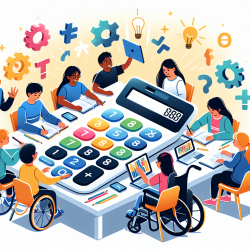Accommodations in education play a pivotal role in leveling the playing field for students with disabilities. Among these, the calculator accommodation stands out as a significant tool that empowers students to excel in mathematics. This accommodation involves the use of various types of calculators, including graphing, scientific, and four-function calculators, as well as voice input speech output (VISO) calculators for students with visual impairments. But what does research say about its effectiveness, and how can it be best implemented?
Research Insights on Calculator Accommodation
Research on calculator accommodation reveals its beneficial impact on students with disabilities, including those with learning, emotional, sensory, or physical disabilities, and even students with mild intellectual disabilities. The evidence is compelling, with numerous studies highlighting improved performance in mathematics assessments when students utilize calculators. This improvement is not limited to specific types of calculators; both graphing and four-function calculators have been shown to increase accuracy and efficiency in computation and problem-solving.
However, the effectiveness of calculator use is not universal. Some studies report mixed results, indicating that while calculators can enhance performance on basic arithmetic, they may not significantly aid in more complex items requiring abstract thinking. Additionally, the perception of calculator use varies among students and teachers. While many recognize its benefits, some students, especially those with learning disabilities and ADHD, experience heightened anxiety when using this accommodation.
Implementation and Student Perceptions
Effective implementation of calculator accommodations requires understanding and addressing student needs and concerns. Despite its benefits, some students with high-incidence disabilities report low usage rates, possibly due to a lack of familiarity or confidence in using the provided calculators. This underscores the importance of ensuring that students are adequately prepared and comfortable with their accommodations.
Teacher and student perceptions of calculator use also play a crucial role in its implementation. Special education teachers are more likely to provide calculator accommodations, recognizing their value in supporting student learning. Students' views are mixed, though many appreciate the independence and assistance calculators offer, especially those with visual impairments who benefit from VISO calculators.
Looking Ahead: The Need for Further Research
While the positive impact of calculator accommodations is evident, further research is needed to explore their use in technology-based assessments and the comparison between embedded and handheld calculators. Understanding how students interact with and perceive these tools will be critical in optimizing their effectiveness and ensuring all students can benefit from these accommodations.
Calculator accommodations are more than just tools; they are pathways to empowerment for students with disabilities, enabling them to demonstrate their knowledge and skills in mathematics. As educators and advocates, it's our responsibility to ensure these accommodations are effectively implemented and continuously improved upon based on research and feedback from those they are designed to support.
For more information, please follow this link.










